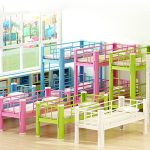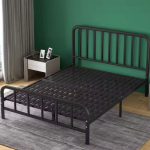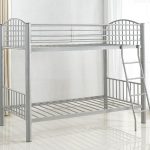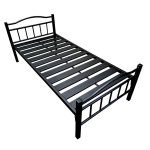Steel Frame bunk beds are popular for maximizing space in shared bedrooms, dormitories, and guest rooms, especially for smaller rooms. Before buying a steel bunk bed, it is important to understand the different styles and sizes. In this blog, we'll dive into the common styles and sizes of steel frame bunk beds and help you find the right one for your space.
Common Styles of Steel Frame Bunk Beds
Steel frame bunk beds come in a variety of styles, catering to different needs and preferences. Let’s explore some of the most common options:
Traditional Bunk Beds
The classic style features a simple design with two stacked beds. These typically consist of two beds placed on top of each other, often made from wood or metal. A traditional steel bunk bed is great for saving space in rooms with limited floor area. This design is usually minimalistic and focuses on functionality over aesthetics.
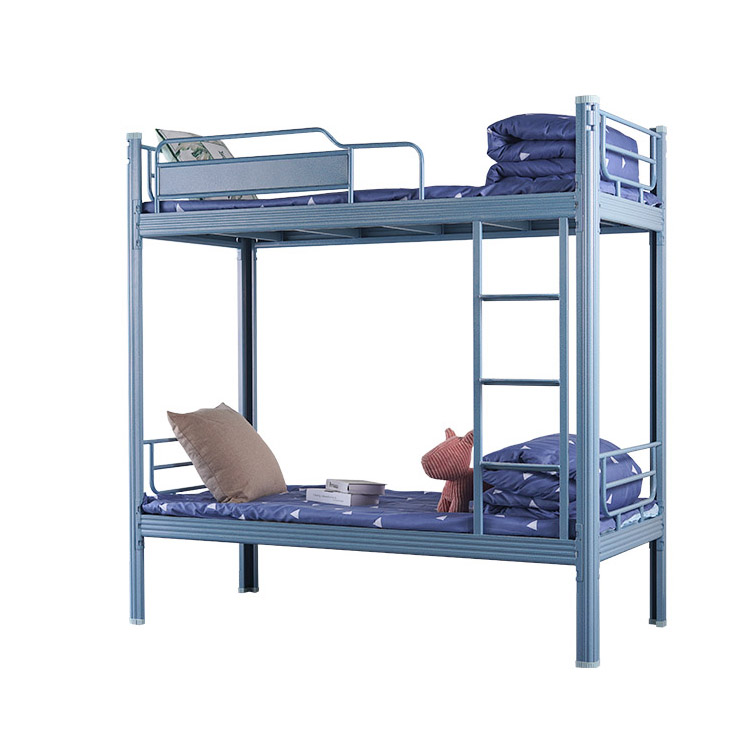
Lofted Bunk Beds
Lofted bunk beds have the top bunk elevated higher, creating space underneath for a desk, play area, or additional storage. These are popular in older children’s rooms, college dorms, and apartments where every square inch counts. The lower area can be customized for various purposes, making it an incredibly flexible option for a wide range of uses.
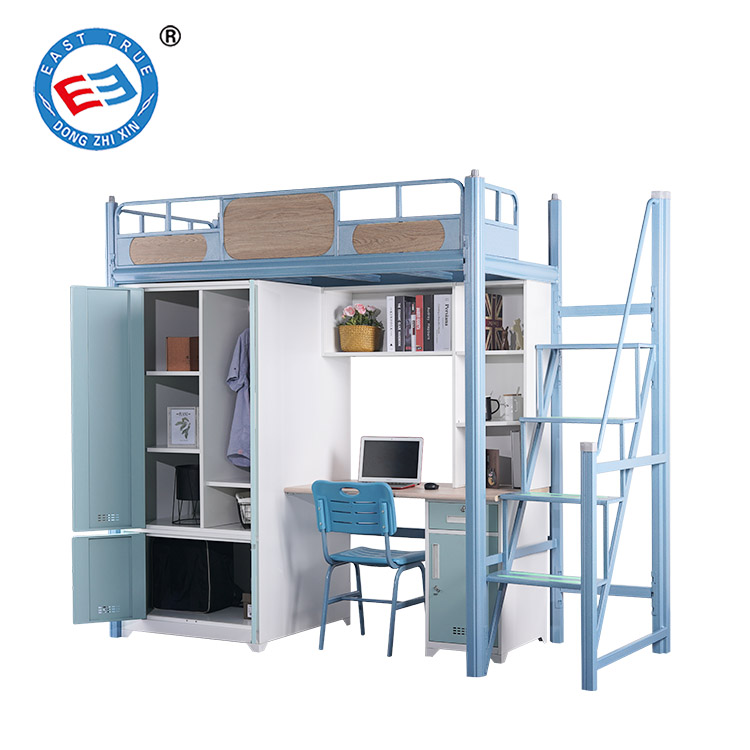
L-Shaped Bunk Beds
This style is ideal for maximizing corner spaces. L-shaped bunk beds feature the top and bottom beds placed at right angles to each other, forming an “L” shape. Often, the bottom bed is placed horizontally, while the top bed rests perpendicularly above it. This configuration allows for more separation between the sleeping spaces and often provides extra room for storage or a small seating area.
Futon Bunk Beds
A combination of a traditional bunk bed and a futon, this design features a standard top bunk, while the bottom can be used as a futon-style sofa or bed. Futon bunk beds are ideal for spaces that frequently double as a play area or living room, offering both a cozy seating option and a place to sleep when needed. This style is especially useful in small apartments or multi-purpose rooms.
Triple Bunk Beds
For families with more than two children, or for those who need to accommodate more people in a small space, triple bunk beds offer three stacked sleeping areas. These can come in several configurations, such as three beds stacked vertically or two beds stacked with one placed horizontally beside them. Triple bunk beds are the go-to option when you need to maximize sleeping arrangements in a tight space.
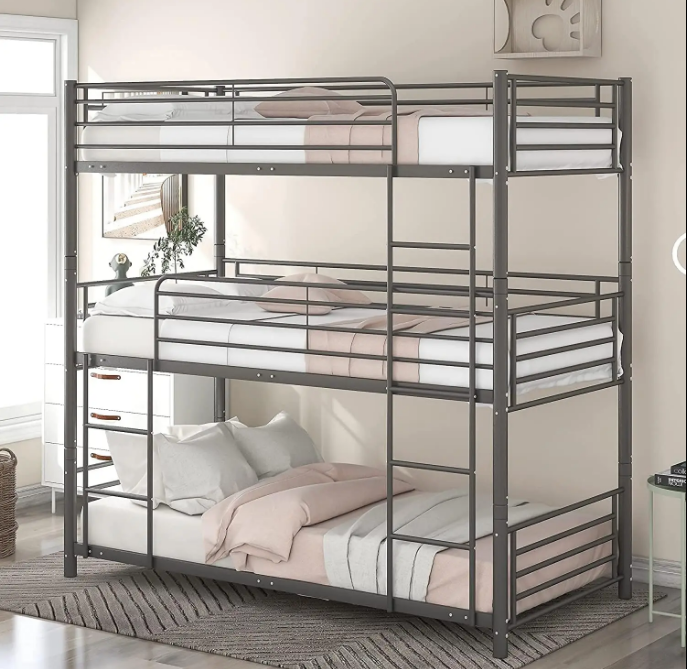
Custom or Themed Bunk Beds
Some bunk beds are designed with specific themes in mind, often for children’s rooms. These could include princess castles, pirate ships, or even treehouse designs. Custom bunk beds can be built to match the unique preferences of the child and the overall aesthetic of the room. These add a playful and imaginative element to the space.
Common Sizes of Steel Frame Bunk Beds
When selecting a steel frame bunk bed, choosing the right size is crucial to ensure comfort and practicality. Steel bunk beds generally come in the following sizes:
| Bunk Bed Type | Top Mattress Dimensions | Bottom Mattress Dimensions | Common Use |
|---|---|---|---|
| Twin over Twin | 38" x 75" (97 cm x 191 cm) | 38" x 75" (97 cm x 191 cm) | Ideal for kids' rooms, compact spaces, or shared bedrooms. |
| Twin over Full | 38" x 75" (97 cm x 191 cm) | 54" x 75" (137 cm x 191 cm) | Great for children needing more space on the lower bunk. |
| Full over Full | 54" x 75" (137 cm x 191 cm) | 54" x 75" (137 cm x 191 cm) | Suitable for older kids or teens, offering more space for comfort. |
| Twin over Queen | 38" x 75" (97 cm x 191 cm) | 60" x 80" (152 cm x 203 cm) | Provides extra space on the bottom for adults or larger sleeping areas. |
| Custom Sizes | Varies | Varies | Custom sizes for RVs, specific room layouts, or unique requirements. |
Note: The above sizes are for reference only, and the sizes of different suppliers may vary.
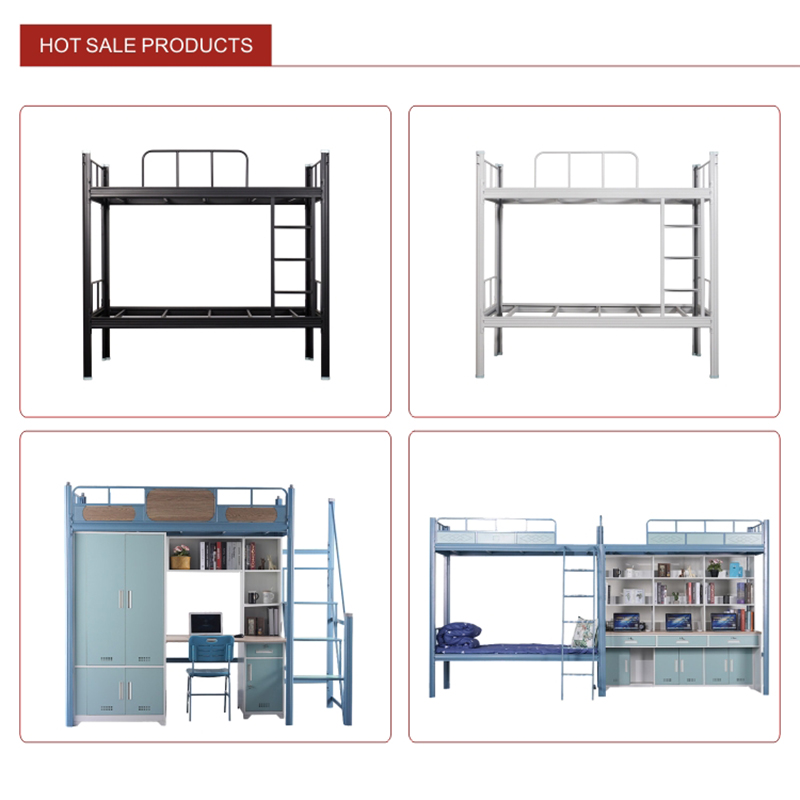
Things to Consider When Choosing a Steel Frame Bunk Bed
Room Size: Larger bunk beds like Full over Full or Twin over Queen require more floor space. Be sure to measure the room to make sure the bunk bed will fit without overcrowding the area.
User Age: Younger children typically need smaller sizes like Twin over Twin, while older kids or teens might prefer the spaciousness of Full over Full.
Safety Features: Ensure the bunk bed has appropriate guardrails on the top bunk, a sturdy ladder for climbing, and a well-constructed frame for safety.
Storage Options: If you’re tight on space, look for bunk beds that include built-in storage options, such as drawers or shelves under the bottom bunk, or lofted designs that free up space for storage underneath.
FAQs About Steel Frame Bunk Bed Sizes
1. What size mattresses do I need for a standard bunk bed?
Most standard bunk beds require either twin-size mattresses (38" x 75") or full-size mattresses (54" x 75"). Be sure to check the manufacturer's specifications for exact measurements.
2. Can adults sleep on bunk beds?
Yes, depending on the design and weight capacity, many Full over Full and Twin over Queen bunk beds can comfortably accommodate adults, especially on the bottom bunk.
3. Are there steel bunk beds for small rooms?
Absolutely! Twin over Twin bunk beds are the best option for smaller rooms, offering space-saving efficiency while still providing two separate sleeping areas.
4. Do steel frame bunk beds come with mattresses?
Most steel bunk beds are sold as frames only, and you'll need to purchase the mattresses separately. Be sure to check the size requirements of the frame to buy the right mattress dimensions.
5. How high are steel bunk beds?
The height of a steel bunk bed can vary. Typically, a standard Twin over Twin bunk bed will be around 5-6 feet tall, with higher configurations like Twin over Queen bunk beds reaching even taller heights. Always check the product details for exact measurements.
With the options outlined in this guide, you’ll be well-equipped to select a steel frame bunk bed that meets your needs, whether it’s for a child’s bedroom, a guest room, or any other space that requires a dual-sleeping arrangement.


